There’s often some confusion around what an OBD scanner exactly is and what it’s used for within the field of car maintenance and mechanics. In fact, if you were to ask around among your friends and family, we’d be surprised if many of them even knew what they’re used for. We’d even be willing to put money on that!
As such, we’ve compiled a comprehensive explanation of the uses of a code reader, including if they’ll save you money, if they’ll work on your car, some of the most common codes that present themselves, as well as a recommended selection of OBD scanners available for purchase – ranging from entry level models to the high-end. Let’s dive in.
The purpose of an OBD scanner – what’s it used for?
The term, or rather the acronym, “OBD” stands for On-Board Diagnostics. The use of OBD scanners – or code readers – allow an owner of a vehicle or a mechanic working on a vehicle to perform a variety of functions, that are useful in diagnosing potential mechanical problems.
They’re commonly used by a mechanic working in a shop or dealership as a first point of call when the vehicle is showing a “check engine” light, as they are often the easiest solution to finding the underlying cause.
In the simplest form, they are plugged into the vehicles OBD port (located in one of several positions, depending on the vehicle model and brand), which in turn, allows – an often generic – code to be returned, with which a trained mechanic can use to quickly identify a fix. Though, it isn’t only a mechanic that can use them. They’re just as useful for an everyday car owner – even if they have little experience with mechanical issues and diagnostics, in general.
Thanks to the widespread use of the internet, a host of information is available. This allows everyone – and not only a trained mechanic, as used to be commonplace – to now look up the code and find the problem at hand. Due to this, they’re an incredibly handy tool to confirm the root of problems that present themselves with a vehicle – either before taking it into a store, or attempting to fix the mechanical issue by yourself.
An OBD reader is also useful for those who do not wish to work on the vehicle themselves directly, but choose to have a garage to do the work. Why? Because they can ensure that the problem exists in the first place and confirm the information they’re being told by the shop itself. After all, why have additional work performed at a cost, if it isn’t needed or it isn’t the root cause of the mechanical fault?
How do I read codes with an OBD scanner – where are they?
The codes which are read by an OBD scanner are programmed into the car by the manufacturer of the vehicle. This allows them to quickly identify problems that exist when the vehicle is brought into a dealership. After all, imagine having to find a fault without a quick and easy solution for this purpose.
Without them, it’d become a process of sheer trial and error – resulting in replacing numerous parts until the problem had solved itself. The amount of time, effort and money that would cost is not feasible – to say the least.
As such, car makers began to introduce and design these quick-and-handy codes into their cars, allowing them to perform maintenance through a much easier method. It’s incredibly simple and anyone can do it with a little time and effort on their own.
The process, in laymen’s terms, is incredibly simplistic. Since OBD-II scanners are universal, and all the connectors are the same, anyone can purchase one and use its functions to identify the cause of a problem. This is done by plugging the OBD2 scanner into the diagnostic port and turning it on.
Why should I buy an OBD scanner – will it save me money?
The question of “will an OBD scanner save me money?” is a rather hard one to answer. Why? Because it relies on specific criteria on a case-to-case basis. Information that we necessarily don’t have at hand to review. Yet, there’s some cases there this is simply a complete and utter no-brainer and pure common sense, more than anything.
For example, if you’re a motorist that truly cares about their vehicle, then having one of these code readers at hand is incredibly useful and worth the rather small investment (depending on the model of OBD scanner you purchase – they range in prices; but more on that later). You might ask why, and we’re happy to explain.
Let’s take the check engine light, as an example in this case. If you’re driving down the highway and notice this light appear – what are your natural instincts? You’d most likely take it directly to a shop to have them look at it. At which point, you’ll be presented with a potentially hefty fee for a quick check-over on the vehicle. Now, do you know what the first point of call for a mechanic is at that store? Yes – you’ve probably guessed it by now already – they’ll plug it into a OBD tool to uncover the problem.
If you had your own machine at home or on hand in the boot of the motor, you’d be able to perform this function yourself. You’d not need to worry about taking it directly to a store or putting it off – due to worrying about the cost you’d incur at the garage – because you’d be able to check and have peace at mind. Of course, upon checking the code, is the problem is potentially serious, you’ll still need to take it in – but you’ll already know the problem upfront and can tell the mechanic.
In this case, you can see how it would, over time, save you money. Yet, even in the short term you could potentially save money with having one on standby. As, you never know when something’s going to go wrong. Remember, the cost of one of these machines would likely pay for itself at the first sign of a mechanical problem. A trip to a reputable mechanic isn’t cheap!
Can an OBD scanner be used on any vehicle – will it work for mine?
Essentially, yes. An OBD scanner can be used on any modern car. Yet, it is slightly more complicated than that – let’s delve into why. There are two main forms of “OBD”. These are known as “OBDI” and “OBDII” – also known as “OBD1” and “OBD2”.
The diagnostic tool known as “OBD2” is newer and often regarded as more advanced – in some ways – than its predecessor, having been introduced in the United States in 1996. Cars made before this year – when new regulations were introduced requiring all cars and small trucks sold to be fitted with this technology – are almost certain to be using OBD1.
As such, from the year your car was manufactured alone you’ll be able to identify which scanner you need to purchase. Furthermore, older cars fitted with the OBD1 diagnostic tool often have the port located within the dashboard. If your car is fitted with it, you might have always wondered what that port was used for – well, now you know!
Newer models of vehicles, of which use the OBD2 technology, often have the port located underneath the driver’s seat. Simply pull the chair forward to reveal the port – if it isn’t there, and the vehicle definitely uses OBDII, then it’s worth doing a small amount of investigation to find out its location within the car.
However, don’t think because your car uses OBD-I, rather than OBD-II, that the scanner won’t be of use – they’re similar in their usage and function. It’s also worth noting, that some cars can be converted from OBDI to OBDII – but that’s a choice the owner would have to make, and traditionally, isn’t needed.
Luckily, there are models of code readers on the market these-days that allow the user to perform diagnostic duties on both OBD1 and OBD2 vehicles. Make sure you purchase the correct one!
What problems can OBD scanner help me to identify – are these machines really that useful?
Yes – they’re truly that useful and often worth their weight in gold to the responsible car owner. They’re the first point of call when there’s a check engine light problem, which represents a fault when one or more of the vehicles systems are not operating within acceptable limits or fails a built-in test procedure. These are known as DTCs (Diagnostic Trouble Codes) of which are recorded by the OBD record system.
The exact faults which can be identified by a code reader are far-reaching and include every aspect of the vehicle, from its engine and transmission systems to climate control, lighting and airbags.
As such, you can rest assured that if you believe there’s a fault on a specific component within the motor, such as the antilock brake system, electronic suspension or even the steering, you’ll have a nifty tool that will allow you to confirm and identify it in moments.
Upon finding a fault with an OBD scanner, it is recommended that you write down the code to keep a reference before clearing it from the machine. Otherwise, you’ll lose track of it and not be able to look it up to research and find the solution to fix fault that exists with the vehicle. More on what these codes mean is up next!
Which codes are most common with an OBD scanner – and what do they mean?
This is often where some due diligence comes into play – and will pay off in spades. There are often hundreds of codes that can present themselves for a wide-array of different vehicles. As such, nailing down a specific short list is quite a complex matter. But, let’s break down some of the most common terms and do some jargon-busting in the process.
Traditionally, trouble codes read by OBD scanners will be cost of four numbers, proceeded by an identifying letter (represented in blue by the reader). An example of this would be “P0301”, which references an engine idling control problem. Though, a letter can also appear towards the end of a trouble code, in some instances.
The letter – always at the start of the code – can signal a variety of problems, the most common of these are as follows:
| Powertrain (P) | Engine, transmission and emission systems |
| Chassis (C) | Antilock brake system, electronic suspension and steering |
| Body (B) | Climate control, lighting, airbags, and other body-related systems |
| User Network / Network Communications (U) | Wiring Bus and other modules |
The latter numbers and letters in the error code can similarly represent a variety of problems and causes for the issue at hand. Check the list below and keep them at hand to identify problems in the quickest time possible:
| 0 | If the 0 at the start of the trouble code is highlighted in green, it means that it is generic |
| 0, 1, and 2 | Often indicates that there is a problem with the ignition system of the vehicle |
| 3 | Represents a fault with the ignition system of the car |
| 4 | Trouble code referencing that the auxiliary emissions need to be checked |
| 5 | Engine idling trouble code |
| 6 | The onboard computer or ancillary outputs need to be checked |
| 7, 8, and 9 | Gearbox or transmission fault |
| A, B and C | These letters often represent a problem with the hybrid propulsion |
As you can see from a quick glance, there’s a lot to take in. Though, the process of tracking down the specific trouble code represented by the OBD scanner isn’t as hard as you’d think. There is a huge plethora of resources available online to look up the exact code you’ve found – allowing you to locate the problem in a very short time.
How do I know what type of OBD scanner I need to buy – where can I find out?
Ultimately, the choice of which OBD scanner you decide to purchase comes down to your specific needs. There are numerous different models, each of which might perform specific duties better than others. An example of this is cheaper, more entry-level models, of which only include the most basic functionality: reading and display codes. This is fine, if that’s all you want to do – get a quick glance at the code so that you can later identify the problem.
Yet, there are many alternative models which do far more than this. Models exist which not only locate faults with the vehicle, but allow you to remove the code – so that it no longer shows up; though, of course, the mechanical problem will remain and still needs to be given attention. The more basic models of OBD codes might require you to perform additional procedures, such as disconnecting the battery itself or even removing an ECM fuse to clear the trouble code. Which isn’t ideal if you aren’t quite equipped to do so. As such, it’s recommended that you purchase a model that fits your specific needs and requirements – and even more so, mechanical abilities.
Ideally, your best course of action here is to purchase a decent entry-level OBD scanner, which supports both OBDI and OBDII (if you do not know which one your car supports – we’ve touched on this previously). These are known as universal of multi-OEM scanners which come with interchangeable connectors – and software – allowing them to support a wide array of different vehicles and brand types.
However, if you’re willing to put research in and want a model that is specifically targeted towards the brand of vehicle you own, this is more than possible – and many exist within the marketplace. These, only allow the OBD scanner to interface with a single manufacturer type, coming with hard-wired connectors and software for this very purpose.
How much does an OBD scanner cost – is there an entry-level product?
Much alike many other products – from televisions to computers and even cars themselves – there are a variety of different of OBD scanners, both OBDI and OBDII, as well as interchangeable models available for purchase to the everyday consumer.
The price can start as low as $30 for the most basic of entry-level OBD scanners and up to more than $100 for more feature-oriented models, that allow the owner or mechanic to perform maintenance in a much more convenient manner. The price you wish to spend, is entirely up to you and is of course, dependent upon your specific needs.
As we have previously mentioned, should you wish to only read codes for further research and to identify the problem at a later time, cheaper models are a potential option for consideration. Yet, they are – we must mention – limited. Those who’re looking to perform work on the vehicle themselves, are most likely going to want a more comprehensive model, that allows them to do so.
The ultimate answer here is to research – we’ve provided a list of some of the best OBD scanners available on the market below to assist you with this – and find a code reader that suits your specific needs. Don’t go cheap if you don’t need to – there’s many reasonably priced models that should be well within the range of most motor owners.
After all, if you’re looking into the purpose and functionality of an OBD scanner, you’re more than likely in the market for one. Don’t scrimp on quality – you really do get what you pay for here.
Can I read trouble codes without an OBD scanner – is it an easier option?
It is, in fact, possible to read some codes without a scanner – on certain cars, that is. However, the process is incredibly complicated, in comparison to an OBD scanner and it is often out of the reach of most normal end-consumers and car owners.
This procedure – depending on the car – can involve anything from turning the ignition key on and off several times at once. In this instance (which is common in Chrysler cars), the check engine light would switch on, resulting in a number of blinks – of which represent the trouble code. As you can see, this is far more involved and confirming the exact fault becomes quite complicated by using this method.
Furthermore, the process can be even more complicated for a number of vehicle types from specific brand names, forcing the owner to even short out terminals within the diagnostic connector to find out the information they require. As we noted, it’s far too complex and hands-on for most. After all, why go through so much hassle when an OBD scanner is available?
My check engine light comes on intermittently – do I still need an OBD scanner?
It’s commonplace for the check engine light to turn on and off intermittently on its own, as described in this example. Yet, that does not mean that there’s not an underlying problem that needs to be investigated.
Imagine it in this instance, if you had a headache every day for a week straight, would you leave it or would you have it looked at? We know what we’d do – that’s for sure. So, the simple fact that your check engine light might occasionally switch on and off by its lonesome, doesn’t negate the purchase of a OBD scanner.
If anything, it should encourage you to do so. Why, you might ask? Because, it saves having to take the vehicle to a mechanic to find out if the root cause is a simple fix or not, which otherwise might cost you hundreds of dollars. The more you know upfront, the more it will help you when it comes to having the mechanical fault fixed.
I see there are different types of OBD connectors, some with up to 16 pins – what’s the difference?
You’re correct. There are a number of different sockets for OBD connectors, ranging up to 16 pins. For example, many General Motors and Daewoo cars made after 1996 still came with a 12-pin connector, which of course, is not compatible with a 16-pin connector.
This, however, doesn’t mean that you can’t use an OBDII scanner still. You’ll simply need to purchase an additional adaptor, which converts the 12-pin terminal in the car to a 16-pin connection. Luckily, these are relatively cheap and will do the trick in no time at all.
You can find out how many pins your vehicle has by simply locating the OBD connector and counting the individual pins – it’s a quick and easy process, and won’t take longer than a few minutes of your time. If you have less than 16, simply grab a handy adaptor and you’re all set and ready.
The most common OBD scanners on the market traditionally come with 16 pins and some are even bundled with a multitude of different adaptors, as well, saving you the hassle of having to sort it out yourself (we’ve even included some of these on our recommended list below!).
How do I setup an OBD2 scanner – what’s the process and can you explain it?
Most certainly! But before we do, we must mention that the process isn’t as complex and troublesome as you might expect. Almost anyone can manage to setup an OBDII scanner and begin to locate problems that might exist with their car in very little time – assuming you’re willing to put in the effort.
The procedure of setting up an OBD code reader can vary slightly on a model-to-model basis, but overall, the fundamentals are the same and include:
- Downloading the required software
There are a variety of models of OBD1/OBD2 scanners on the marketplace which come with handy and often times, free updates. It is often wise to download the correct software – and the latest version of the software – to ensure that when you scan, you’re receiving the correct information.
Often times, piece of software will also have to be installed on the PC itself, to enhance the OBD scan tool results, providing additional information on trouble codes and to access further live data (again, this depends on the model of scanner you purchase). Typically, OBD scanners come with a USB cable to assist with this part of the procedure.
- Locating the data link connector in your vehicle
Before you’re able to plug the OBD code scanner into the vehicle, you have to locate the exact whereabouts of the data link connector, also referred to by the acronym “DLC”. We’ve already touched on this, but it is traditionally located on the dashboard or under the driver’s seat – depending on your car and the date it was manufactured.
- Connecting the OBD scanner
Now you’re read to plug in the OBD scanner itself. This involves plugging in the pins to the correlating ones on the data link connector itself. Typically, each pin has their own power source an is specific to a certain part of the diagnostics of the car, and as such, they are standalone. Make sure they’re all plugged in properly!
- Using the OBB scanner to perform maintenance
From this point onwards, you can begin using the OBD scanner to start diagnosing any potential mechanical faults that might be affecting the vehicles performance. This is traditionally very straight forward and is all performed using the on-board screen of the code scanner.
Those who purchase a code scanner that works out of the box, won’t have to worry about this, of course. But, some of these models might be more limited in capacity – so they are not recommended for all purposes. The key here, as we’ve noted already, is to find one that works for you.
I understand that an OBD scanner is useful – so why aren’t more people buying them?
As aforementioned earlier in our article, we suggested that if you asked around, you’d find that very few people even know what an OBD scanner is, where the OBD terminal in their car is located, or even know of its designed purpose. This creates a lot of confusion for those who don’t investigate – why is certainly a reason as to why more people might not be buying them.
Similarly, the cost involved within purchasing one varies a fair amount. However, this is becoming less of a problem these-days, due to cheaper component costs, which allow OBDI / OBDII scanners to be manufactured at a more reasonable price. Whereas, previously, only mechanics and shops would purchase them – keeping the price high at the time for car owners.
It is also true that the process of using an OBD scanner can still be a daunting process for many who do not have the know-how or the willingness to learn. Some may need to be plugged into a computer (often via USB, which is supplied with many models of code readers), to perform regular updates and other functions. For the non-tech savvy, this can be a troubling gateway to holding off on a purchase of an OBD scanner.
Yet, this is also becoming less of a problem, as more and more OBD code readers are being designed and developed to work out-of-the-box and to make the updating process as simple as possible.
The top 5 most recommended OBD scanners available to buy – from the cheap to the expensive…
Autel AutoLink AL319 OBDII Diagnostic Code Scanner and Reader Tool
Those looking for a decent low-cost and entry-level OBD scanner is this one from Intey, which retails at a very reasonable price point. Though it is said to work with “most cars” from the year 2000 onwards, it also warns that it may not be compatible with all. As such, some research will be needed if you purchase an entry-level model such as this, due potential problems arising at a later date.
The benefit to this model from Intey is that it requires very little hassle and will work out-of-the-box, with no third-party software needed to be installed or setup in the process. This makes it ideal for those who have not previously used an OBD scanner.
The downside, is that it only focuses on the check engine light and doesn’t allow further diagnostics, for features such as the airbag to be performed. Yet, it is still a very solid entry point for those looking for a cheap and reasonable code reader – which is this model’s main duty.
Another strong point for purchasing a model like this, or similar to this, is the ability to not only read and display codes, but to clear them – including generic codes, pending codes and manufacturer specific codes.
Ancel AD310 Classic Enhanced Universal OBDII Scanner
Ancel manufactures a large number of automotive products, including OBD code readers. This, is one of their entry-level models and does the equivalent of some of the more expensive scanners, at a fraction of the price.
It is designed to work with “all” (Ancel are very clear and sure about this) cars manufactured in the US from 1996 onwards, 2000 for European and Asian cars, and is even said to support newer domestic or imported vehicles.
The Ancel AD310 features a fast scan option, which allows for locating trouble codes in a quick and easy manner, along with the functionality to erase them. It doesn’t require an external power source of batteries, and like many of the more expensive options on our list, draws power directly from the OBD connector located within the vehicle.
Furthermore, it features support for English, German, French, Spanish, Finnish, Dutch, Russian and Portuguese languages – a feature that many high-end models don’t even include. For the price, this is arguably one of the most attractive OBDII code readers available on the market.
Foxwell NT201 Automatic Diagnotisc OBDII Scan Tool
Foxwell is a well-known manufacturer of OBD code readers. It is undoubtedly one of the most reputable within the industry, producing many models of OBDII scanners with are unparalleled in quality by others.
This model, the Foxwell NT201, is regarded as a solid entry-level code reader from the brand. It will work with a wide-number of different car models, including domestic and import cars, light-duty trucks (12v only), SUVs and mini-vans that were manufactured from 1996 and onwards in the United States, Europe and Asia from 2000 onwards and even Japan from 2008.
It has a built in one-click scanner, which is designed to quickly search and identify problems with the vehicle in the shortest amount of time possible, returning red, yellow and green indicators to signify its condition. Though, the usual trouble codes are also represented, as well. Similarly, it can erase engine fault codes that might appear, too.
As with all models of OBD2 scanners produced by Foxwell, it comes with life-time free software updates. You can’t get better value than that for this price point.
Foxwell NT301 OBD2 Code Scanner Universal Car Engine Diagnostic Tool
Here’s another code scanner from Foxwell, and this is one of their best-selling models available on the marketplace.
It’s hard to argue with the price point for such a reputable brand, that’s for sure, especially when it comes with a 2.8” wide TFT colour screen, that allows you to track down error codes in the easiest way possible (as we’ve previously mentioned – the colour of the letters and numbers in the trouble code are incredibly important in tracing their origin to a specific component).
It is universal and will operate perfectly with all cars manufactured from 1996 onwards in the US, 2001 in the EU and Asia, as well as newer OBDII domestic or imported vehicles, as well.
Additionally, handy features that come with the Foxwell NT301 OBDII scanner include a built-in code library, allowing you to quickly root out the cause of the trouble code and live-vehicle sensor data (in both text and graph form).
Innova 3140 OBD2/OBD1 Scan Tool with OBD2 Live Data
An undoubtedly high-end model of OBD scanner is the Innova 3140, which retails at a pretty hefty price-point. Though, as aforementioned, you truly get what you pay for with these code readers – so don’t discredit it due to the price entirely.
The main attraction with the Innova-brand device is that it’s both universal and interchangeable, between both OBDI and OBDII. That means, that no matter the brand of your car or the year it was manufactured, this code reader is perfect for you. It’s truly a one-size-fits all device.
Including language support for English, Spanish and French, it features backup memory, which allows trouble codes to be viewed even when the scanner isn’t connected to the car. Handy for further analysis when closer to a computer to research and look up the mechanical fault in detail.
Furthermore, it provides enhanced access to live data, through the format of graphs and records he for playback on the screen.
Bonus buy: convert your iPhone, iPad or Android device into an OBD Scanner…
BlueDriver Bluetooth Professional OBDII Scan Tool for iPhone, iPad & Android
Here’s an interesting concept for those who’re in the market for an OBD scanner. We can’t say we’ve used it personally – but the reviews and feedback certainly doesn’t lie, with more than 1000 people already choosing to go this route, according to sales records on Amazon.
It’s a small Bluetooth-enabled device that connects to an iPhone, an iPad or an Android-based phone or tablet – which in turn transforms it into a fully-functional OBD scanner. How neat is that?
The downside, is for those who own a car with OBDI fitted, that this isn’t an option. It’s designed to work specifically with OBDII. Yet, for those whose vehicle is fitted with OBDII, it is said to have all of the functionality that you’d expect from a high-end traditional OBD code reader.
Furthermore, an interesting feature is its “Repair Reports”, which are entirely free for owners of the BlueDriver OBDII Scan Tool. It allows consumers to hook into a database of more than 4.3 million fixes for trouble codes, which have been by certified auto mechanics.
Still not sold on the idea of an OBD scanner? Look around our website for additional resources
We’re here to assist you in the purchase of an OBD scanner that is perfectly suited to your needs. To help you in this process, we have a plethora of information and resources available to help you come to a decision on which model you should buy.



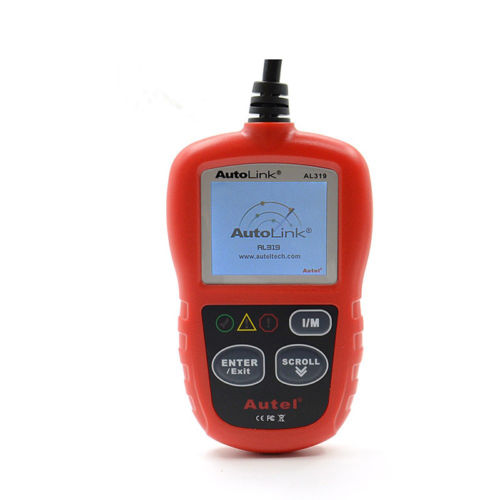
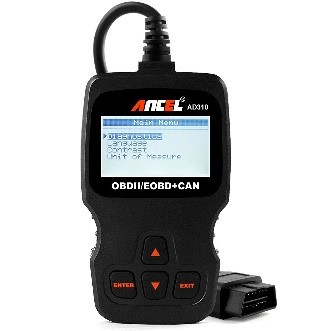
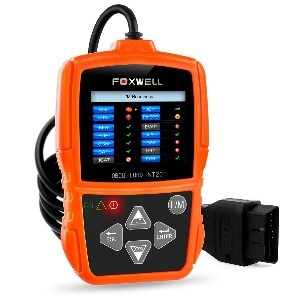
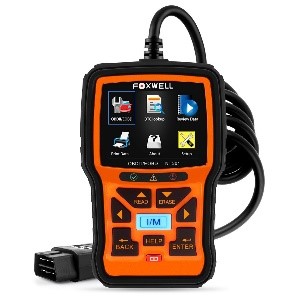
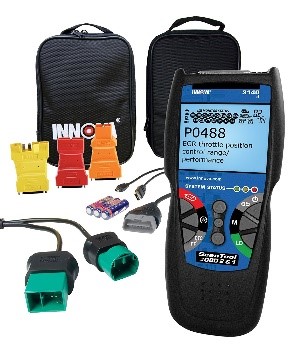
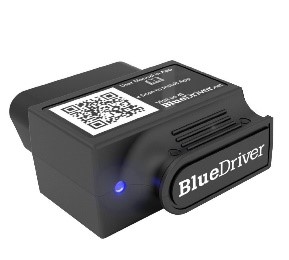
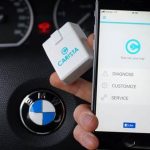
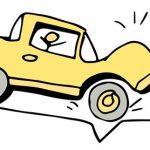

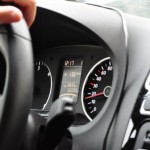
[…] and fixing issues with relative ease. You’ll find that the most common devices are known as OBD scanners or […]
Got one of the OBD scanners from Amazon, as result of reading this article. And has worked excellent when the check engine light is enabled. Car had a problem with coolant thermostat and was capable of diagnosing it before visiting the mechanic through the web with the code car got and the symptoms it had. We wanted to see if the new car mechanic place was going to be honest (we just moved to a new province), so we decided to not say anything about the situation except the check engine light went on. The mechanic explained to us that was the problem indeed and nothing else. Now that’s a honest car mechanic.
Should I buy OBD tool or not? Just ask yourself “What is my intention for it’s use? Novelty or keep family/car/kids safe on road, plus save money?
I certainly found buying obd scanner one of best investments for car’s safety/usage in long term.
Now I finally know what the obd port is for in the car. Now to think which obd scanner to purchase?
Car diagnostic test (performed via obd-2 scanner) is a process by which all of your car’s microchips, processors, sensors and other important components undergo a thorough inspection after being linked to a car diagnostic computer. This car diagnostic tool will be able to pinpoint the exact location of what is causing the malfunction in your vehicle.
Everything from the transmission, oil tank, exhaust, gas tank, etc… will be reviewed to ensure optimal performance.
Regarding an obd scanner, here’s why to use one.
Some people wonder why you can’t just clear “check engine” codes before taking an emissions test. Most code readers or standard OBD Scanner can do just that.
Pressing a button wipes the codes from the computer’s memory and turns off the “Check Engine” light wipes away.
But as soon as the vehicle is driven, the faulty code may reset and the “Check Engine” light may come back on depending on the nature of the problem.
That’s where the readiness status comes in. A vehicle is not considered “ready” to take an OBD II plug-in emissions test unless all of the required monitors have run.
The EVAP and catalyst monitor are the slowest ones to run, and may require driving the vehicle several days and at various speeds and loads before they will run their self-checks. So until that happens, the vehicle can’t be tested.
So while obd scanner is helpful, it’s not going to solve the problem while car is on the road.
Also don’t forget… Until recently, an obd code reader was not typically found in the do-it-yourselfer’s tool box. For working on 1996 & newer vehicles, however, it can be really useful. Furthermore…
OBD code readers come in a variety of shapes and sizes. Some work in conjunction with a laptop computer and software. In those cases, you basically get a cable and software. In other cases, the unit is handheld and does all the same functions, but in one neat, portable package.
I found this obd scanner machine great to use. The scanner told me what parts were at fault in the engine and it also gives you a possible solution to the problem. I have a Honda, which has a common problem of high revs or top speed of 30km/h. The cause can be throttle related. Our problem was a broken wire going to the throttle position sensor, some people replace certain parts which are very expensive, $600+ for this situation. The obd scanner I got (al519) saved me a fortune on workship fixes.
This Universal OBd ii scanner works on my Toyota Corolla decently. I had my engine light on and bought this unit and it actually saves me money because the mechanic was telling me all type of stuff wrong with my car.
We immediately purchased the tool to see if my car really had the problems this mechanic was saying. So when I installed it and used it it have me a code that my engine fluid needs to be changed and the radiator fan needs to be changed it was a easy fix and I fixed everything my self.
Saved hundreds just buying, even a simple generic obd scanner unit, knowing myself what’s wrong with my car good I car to have.
Our worship deals mainly with EU/USA made cars. And we’ve already used 3 of the obd scanners mentioned on this page, like autel/innova models. We consider them both engine code readers, doing no more then verifying “check engine light” diagnostics.
So we need something more targeted towards car code readers which can read BCM (body control module), vehicle electronics, Airbag, breaks ABS, runroof, front lights, etc.
We don’t have time to test various obd readers, as busy in shop. So if any car garage worshops with proper experience using automobile code readers, what is your genuine advice for professional obd scanner?
Finally got an obd ii scanner. Fantastic useful tool. This is my 3nd car gadget, as I lost my first one and 2nd scanner displayed inferior information.
Very portable, straight forward to use, and device does everything it’s supposed to (read codes, reset them, check monitor readiness) in a user friendly GUI interface.
I prefer a physical OBD II reader over a WIFI one because there are no variables to affect it’s functionality.
WIFI obd ii scanners require you to have internet on your phone and require the app to be running all the time.
Whereas portable handheld obd ii device takes away the extra hassle and always works.
Engine code readers OR vehicle diagnostic tool OR it’s one and the same? Confusing. So many terms.
Great seller for the autel obd code reader. Autel scanners I find, most useful tools for any dIY car guy. The car scanner quickly connected to my ecu and found out one of my 02 sensors was bad and was also able able to view a graph and voltage will def do business with them again in the future
With obd2 scanners, Here is what I am looking for:
Suppose the Evap test fails, will car diagnostic scanner show that it need to see this valve by certain time or the decay valve was too short. So I’m looking for parameter with min and max valve.
And not just for this but for all of code the code setting parameters. What is the vehicle/obd2 scanner price which can perform this job, if know.
I am a independent BMW technician working in California USA, in the beginning of this year all cars model 2012 and up in order to pass smog test the vehicle must be clear of permanent codes, AKA mode$10 or mode$0A.
The shop I work has ISTA to diagnose on the manufacturer side of the CU, but if someone has previously cleared the fault codes ISTA can only read that has a permanent code but it can’t read the triggering code or codes in mode$10.
Here is the permanent codes information in the California Bureau of Automotive Repair A training video is at the bottom point #14 :
https://www.bar.ca.gov/Industry/Industry_Resources/Permanent_Diagnostic_Trouble_Codes.aspx
Here is a video of the snap-on scanner were they show reading permanent codes in mode$10:
https://www.youtube.com/watch?v=aP8udazMypM&feature=youtu.be
I really like your scanner obd TOAD-pro software which I use it almost everyday since 2016 and will love it to have the feature since so far 2 other tools in the market can read mode$10 and they are out of my purchase range.
Do you have a obd scanner that can do this job?
Hello, I have a 1988 Ford Bronco (full size F150 style) that is fully restored and modified for overland travel.
It has a new modern 351W/5.8L engine that was upgraded from MAP/Speed Density management to Mass Air engine management using a kit from Ford Racing that contained a special EFI overlay harness and a new EEC-IV computer module from the 89 – 93 5.0L HO Mustang series.
The obd code reader did not, however, replace the ODB1 harness configuration so I would like to get an interface cable between the ODB1 harness connecter and my Windows 10 laptop.
I am hoping that possibly an ODB1 x ODB2 adapter device could perhaps, with the right software, provide more analysis capability than a plain ODB1 scanner.
Clearly an ODB2 scanner will not read the current system, so what products and software do you have that will solve this issue and allow me to tune my current system through my laptop.
I purchased this software and the USB obd2 code reader and Wireless OBD code reader for use when my old OBD scan tool finally became outdated.
Today I installed the USB software and attached the USB connector to my laptop then plugged it in to my Ford Escape.
The “Wrench” light was not on (it had previously illuminated two times after a transmission failure to shift occurrence) so with the laptop and software still connected I drove the car attempting to get it to shift and when it would not the “Wrench” light illuminated and and returned home to try to diagnose the issue with the engine still running and the light illuminated.
Your software did not identify the trouble code or acknowledge it existed. Is this something any specific code reader tool can diagnose.
Just go the VD700 obd code reader and it’s a significant improvement over the VD500.
The all system test runs itself vs. the prior version where one had to select each test separately.
The built in battery features including battery life diagnostic is convenient. Have not tried any of the reset features yet.
In terms of reading error codes, both have the similar capabilities, but the interface of the VD700 code reader is important to me.
WHAT IS AN OBD2 SCANNER? Onboard Diagnostics 2 or OBD2 is a standardized system in trucks and cars. It’s mainly used for self-diagnostics. The OBD2 software (Android/windows mostly) regulates and monitors your car’s main functions.
It can send commands to different systems to maintain your car’s overall health. It can also self-correct any anomalies in fuel mixture and vehicle ignition.
To understand OBD2’s gathered data, car owners and technicians use an OBD reader diagnostics scantool.
This device can present data about a vehicle’s engine RPM, coolant, and air temperature, camshaft and crankshaft position, road speed, and throttle.
I’ve been looking for a credible car code reader on Amazon. Comes does to Foxtell, Inova obd code readers. Any advice which lasts longer in extreme conditions like shaking, vibrating, hot/moist weather.
I asked local mechanic “what scan tool should I buy?”. He recommended SnapOn ($3000), but that’s too professional for my usage.
Finally found a decent car code reader after my 2008 Subaru was returning check engine while accelerating until 19 miles from the residence. I couldn’t make it to an auto parts store before it turned off. Took a chance at TOAD-Scan check engine code reader, and it worked! I didn’t even have to look up a code.
It said cylinder 2 was misfiring right on the screen. Cleaned off the spark plug and that’s all it needed. No more lit up MIL light. Recommend a check engine light reader to anyone wishing to do obd diagnostic.